In today’s #BigStory, we uncover several aspects of the Cannes Film Festival that we don’t very often read in the press. Read on.
What the Festival entails…
For the past 75 years, the Festival de Cannes has aimed to draw attention to films from across the world, contribute towards the development of cinema, boost the film industry and celebrate cinema at an international level. Every year, the Festival invites artistes from all over the world.
The Official Selection has several films produced by over 35 countries shortlisted by a Selection Committee. Accredited professionals from all around the world represent their cinema at the Festival that commands large scale international coverage in the media.
Arthouse films that have a wide audience appeal are presented in Competition, while Un Certain Regard focuses on films that make discreet yet strong impact globally. The Official Selection also includes Out of Competition films, Special Screenings and Midnight Screenings. Historically important films are featured in Cannes Classics and the LA CINEF has a selection of films submitted from film schools.
Short films feature in the Competition and in the end, the Short Films Jury awards a Palme d’Or to the best. There’s also a Short Film Corner that facilitates meeting people, exchanging ideas and promoting films.
There’s also a Village International that is a platform for various countries to showcase their cinema. For cinema lovers, the Festival offers masterclasses, tributes, and exhibitions.
The Festival also promotes talents from other areas of filmmaking. For example, the Caméra d’Or is awarded to the best film presented either in the Official Selection, during Directors’ Fortnight or Critics’ Week.
The Red Carpet drama
This is the part of the Festival that draws the most media attention every year. The Cannes red carpet honours creativity of artistes and gives a global exposure that boosts their reputation. But what is the drill like before the actual action on the runway begins?
Brigitte Leloire, a journalist from France, has been covering the Cannes Film Festival over the past 9 years from ground zero for Asian Culture Vulture. Speaking to ETimes, she says, “The jury members are hosted in a hotel closer to the amphitheatre Palais des Festivals et des Congrès. Apart from the jury, there are also the accredited teams of the films in Competition. There are several screenings in a day at 7 pm, 9 or 10 pm and midnight. Before the red carpet, the crew checks the tickets. The area is blocked by security and only those who have the right ticket are allowed in the amphitheatre (that can accommodate upto 2500 people!). The photogs have a dedicated area allotted to click photographs of the stars as they arrive on the red carpet. The red carpet itself is not very long and there are only a few minutes to take the shots. Climbing the stairs is another important moment. There are policemen deployed all over the place.”
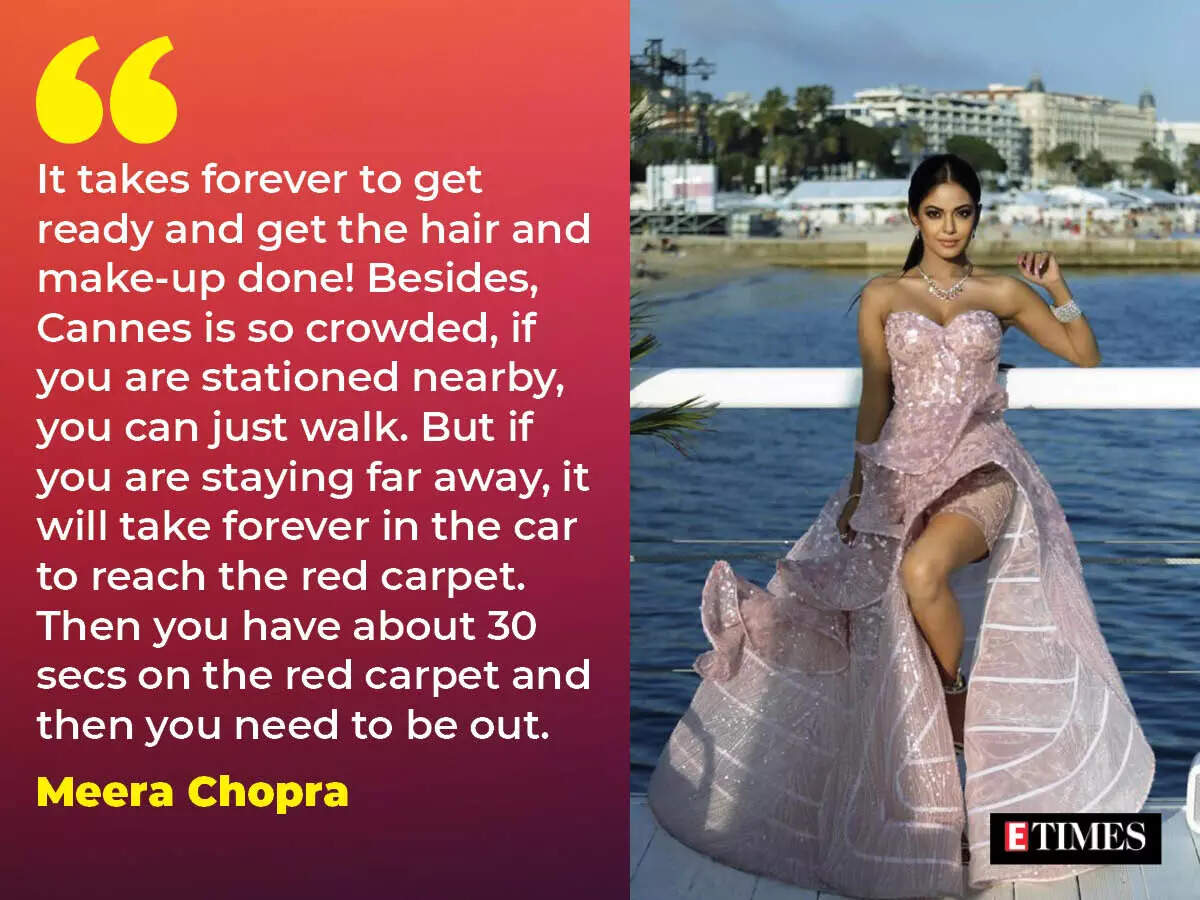
Priyanka Chopra’s cousin, actress Meera Chopra, who made her debut at the Cannes red carpet this year while launching the first look of her film ‘Safed’, says, “It takes forever to get ready and get the hair and make-up done! Besides, Cannes is so crowded, if you are stationed nearby, you can just walk. But if you are staying far away, it will take forever in the car to reach the red carpet. Then you have about 30 secs on the red carpet and then you need to be out. Because it was my first time, I was advised to walk really slow, look in all directions for the cameras. If you walk fast, the red carpet is not long enough, so you will finish it in no time and you won’t be captured well.”
It is unlikely you missed the video clip of Deepika Padukone struggling on the red carpet with the train of her orange gown. It could make anyone wonder, with an outfit this difficult to manage while walking, how could one sit through the entire screening. Although there are reserved seats and restricted areas inside the amphitheatre for celebrities, what good can that do to an uncomfortable attire?
Brigitte states, “The jury members have to watch all the movies. It may be that some of them have already seen the movie in the morning and they are there for the event which is an official premiere. It could be that they make the red carpet appearance and go back to the hotel! Because the red carpet is also a place where the big fashion brands showcase their best. It is a huge platform for them.”
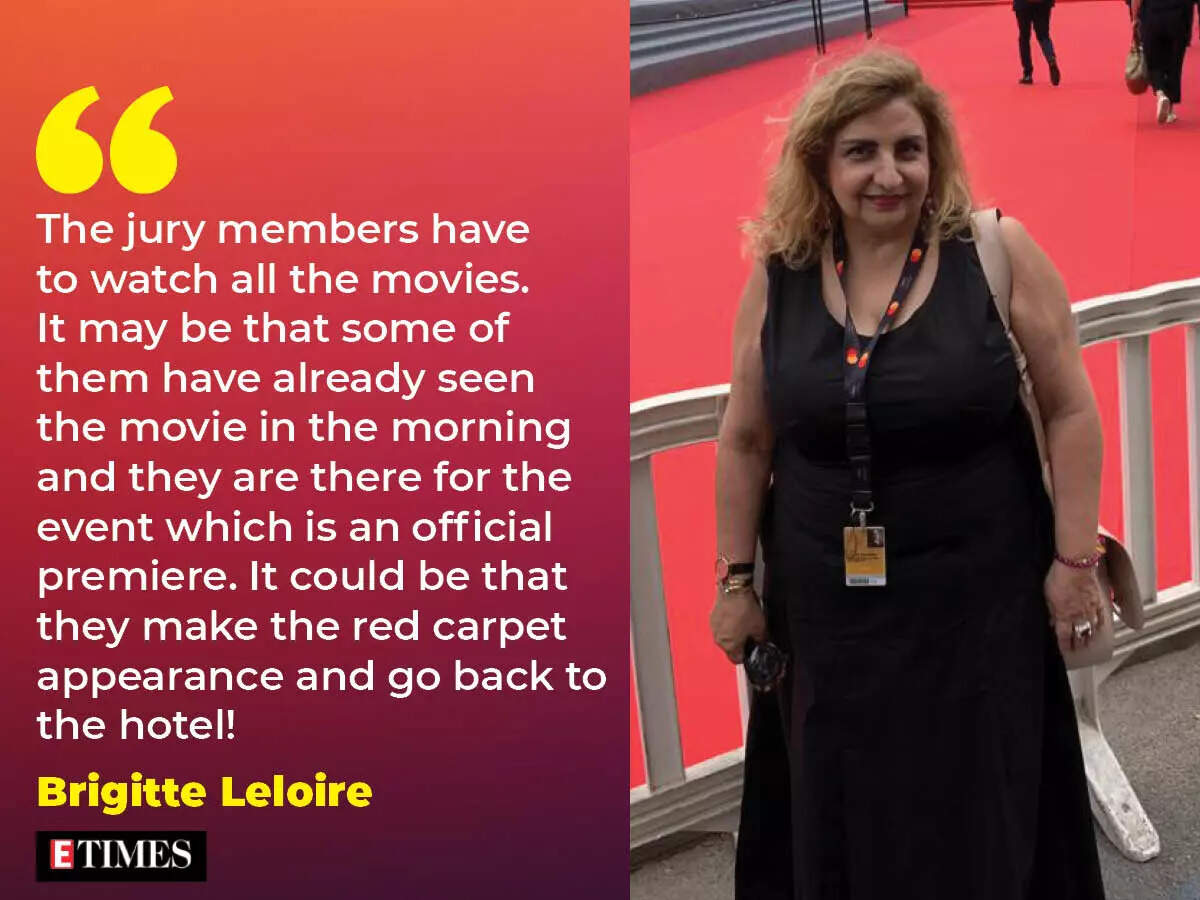
“After the red carpet, you go for the screening. Sometimes people skip the screening after the red carpet, because the outfit is so over-the-top. One cannot change the outfit as there is only one entry. If you exit there’s no option of coming back again,” adds Meera.
Fashion designer Reza Shariffi, who has designed Cannes outfits for the likes of Kangana Ranaut and Mallika Sherawat in the past, says, “The over-the-top outfits they try to do, it is all about grabbing attention by trying to be different. If you wear basic, people won’t see. When Aishwarya Rai wore that pink gown designed by Gaurav Gupta, it looked uncomfortable, it was huge and awkward. Whereas when Deepika wore the Sabyasachi satin shirt and trouser, it looked elegant and classy. So you don’t have to be very different to grab eyeballs. Even if you wear normal, understated, different clothing which is styled well, you can attract attention. What Aditi Rao Hydari wore, that understated black gown with a different styling, she got all the attention without being over-the-top about her fashion.”
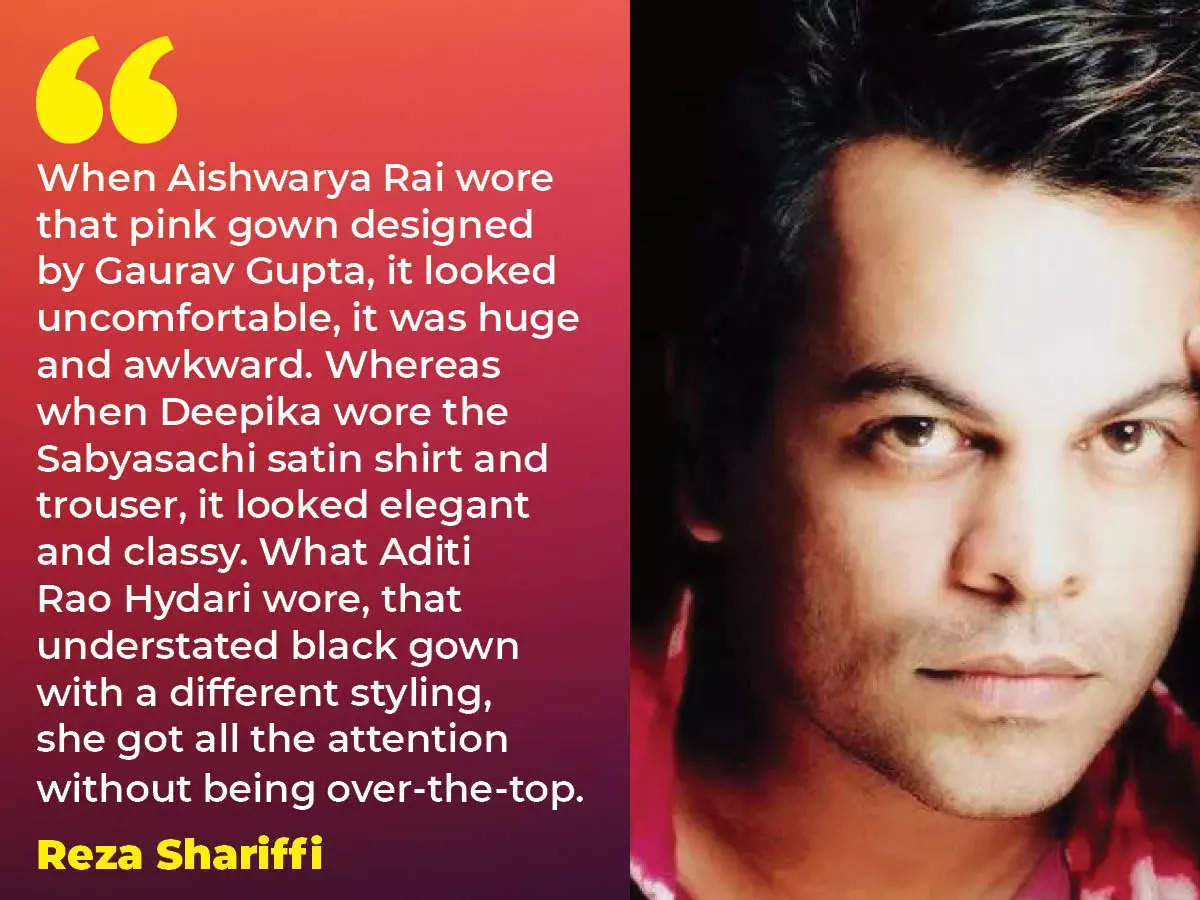
Meera shed some light on her prep for the big walk. “It is important to wear something that is comfortable because all eyes are on you! When I chose my clothes, I decided to be simplest during the red carpet. I didn’t want something that had a trail because I was worried I’d fall. Sure, it looks stunning, but I went for comfort, a simple hairdo and simple make-up. I feel simplicity is the best. Overdoing it on the red carpet is done to death. It was hard work of good 20-25 days of coordinating with designers to get the best of the looks. I remember my house was full of clothes during trials and I had to choose only 3 or 4 best looks,” she said.
Fashion influencer Masoom Minawala had her third time at Cannes this year. “My team and I start planning for the Cannes Film Festival months in advance. However, for the first time in three years I received my red carpet dress 2 hours before the red carpet, so the first time I tried that dress was on the red carpet. The struggle and anxiety that comes with sourcing your ensembles globally is a task. I had my team with me as well as make-up and hair artists to help me with my looks,” she says.
One may wonder if actresses get to do some mock trials before the D-Day. “There are no mock trials,” quips French hair and make-up artist Florian Hurel. “However the fittings are there in order to be ready for the day itself. We need 2 hours to be ready for the carpet, post taking images of the look. The main stylist is mostly allowed to follow the artist, only one person from the crew. As a French citizen I’ve been in some situations where I could help on getting the taxi on time or get to have the pass for the carpet etc,” he says.
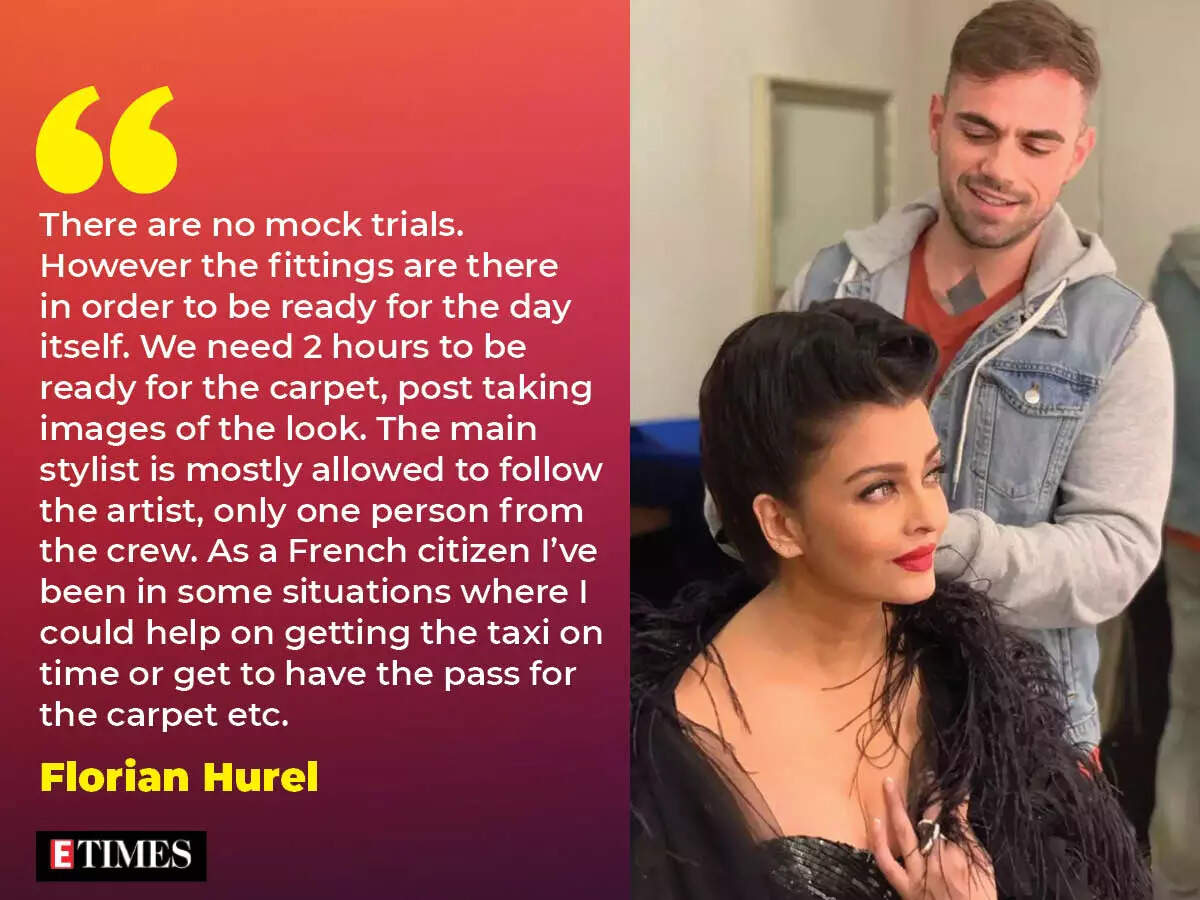
The Marche du Film
Marche du Film is an integral part of the Cannes Film Festival that promotes both – the cultural and the economic nature of cinema. It literally translates to Film Market that has participants from all over the world. It is an excellent channel for film professionals to network, exchange information, and find new opportunities. This year, a bunch of Indian films were screened/launched/premiered at the Marche du Films with India being the Country of Honour. R Madhavan’s ‘Rocketry: The Nambi Effect’ was one such film.
“They want to enhance and improve links between the Indian cinema industry and France, and other countries in the world. For the opening ceremony, we had R Madhavan, Deepika Padukone, Shekhar Kapur, AR Rahman, Nawazuddin Siddiqui, Tamannaah Bhatia, Pooja Hegde, Helly Shah… a fairly large group of celebs came for opening of the Indian village. I have not seen such a big group of Indian stars at the opening ceremony in 9 years!” exclaims Brigitte.
Nargis Fakhri who made a surprise appearance at the Festival this year, says, “I was impressed by the way the Indian government has showcased India to the world. I was very happy to chat about India and the business of films, and how internationally, people are loving the content coming out of India. I feel India really made an impact this year.”
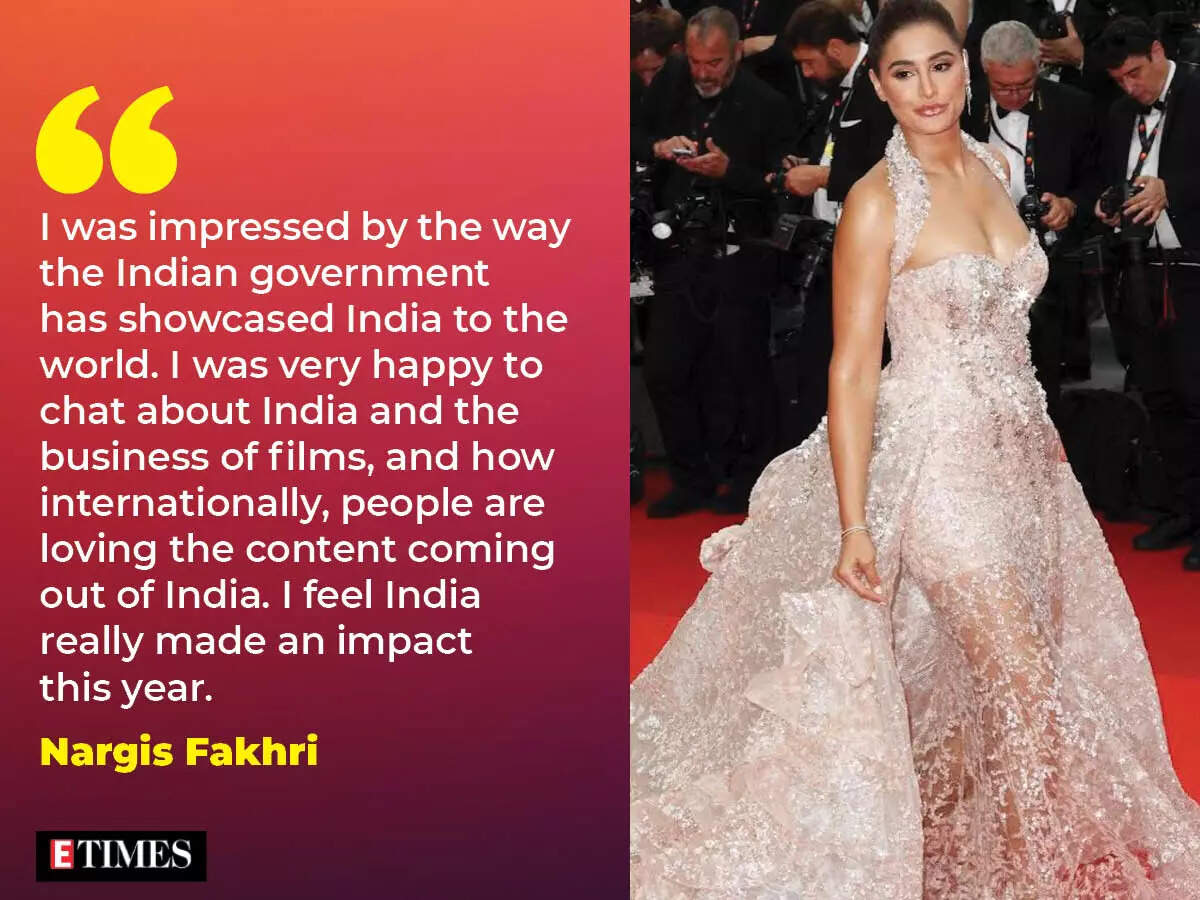
Creating international avenues for Indian cinema
An international film festival like this one can serve as an excellent platform to create global opportunities for Indian films and artistes. Producer and film trade analyst, Girish Wankhede, had his short film ‘Parchaaiyaan’ screened at Cannes this year. He believes opportunities like Cannes should be used to create global avenues. “Nawazuddin Siddiqui has been a regular at Cannes for the past 7 years. He has signed a Hollywood film which is a wonderful thing. Our actresses walk the red carpet, Deepika is a juror, but Aishwarya Rai, Tamannaah Bhatia, Pooja Hegde, Aditi Rao Hydari, Urvashi Rautela, they talked about their brands or their movies. Only Deepika was able to speak about India as a whole. I feel when we are talking at an international market, we need to create global avenues. We should plan meetings with co-productions, agents, and seek international collaborations. Other countries look up to Indian cinema, but we lag behind because we don’t have the right marketing acumen. We have people who speak and write. But there should be effort in making collabs, and getting international press for our actors. We need more people in the industry like Gurinder Chaddha and Guneet Monga, who understand the international market well. We need people like Vikramaditya Motwane, Anurag Kashyap who speak to the international press and also connect with global audiences. There is a disconnect between creative and marketing people in our industry that has been hurting us for so long. We have people who are at the fore, but where are the marketing people who can create a euphoria around it?” he says.
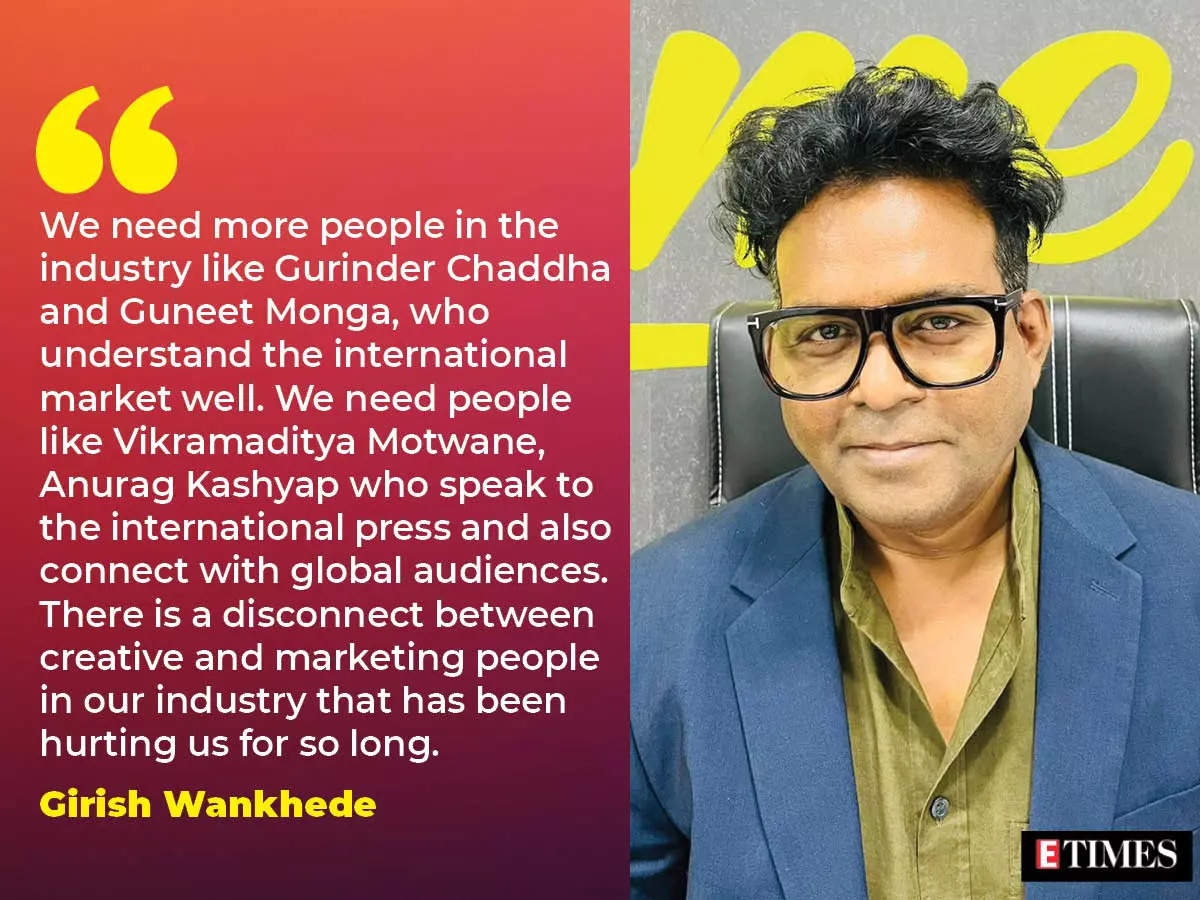
Meera Chopra made the best of her time at Cannes. “I saw an Italian movie, and a Pakistani movie, Joyland. It was an enriching experience because there was so much great talent under one roof. I met so many American and European film directors and producers and they all meet you as one. There is equal respect given to everybody, be it an A-lister or a relatively new person. They treat you well and speak to you and share experiences and work profile. It was amazing!” she shares.
While it is always a great honour to have Indian films in the Official Selection at Cannes, Girish is disappointed with the way some filmmakers use it merely as a publicity vehicle. “They take their films to Cannes, and showcase their film in a theatre. If you are a delegate, you get tickets and passes to the official screenings. You also get one or two red carpet passes for screenings of other films. There are people who come with their film, book a cinema outside, take a picture on the red carpet of another film and use it for publicity. It’s a disgusting practice and I have seen it in the last few years that I have attended the Cannes Film Festival. Official selection, in Competition, premiere – these are very ambiguous classifications that people misuse for their own benefit,” he lambasts.
The takeaways
Girish Wankhede believes we have lots to learn about logistics of event management from Cannes. “The organising teams of the Festival de Cannes are brilliant. They know how to handle the red carpet like it’s no one’s business. The security is on point. There are scanners everywhere, security checks at every point. They are very punctual, focussed and pretty strict about their protocols. Even a few minutes delay can deny your entry to an event,” he says.
“My takeaway from this first Cannes event is that it’s a very stressful activity because of the pressure of social media and visibility. You get ready, get the hair, make-up and clothes on, go for a photoshoot and then select a picture and give it to the PR team and push it on social media. It is a huge exercise which has no end. I went with my 7 looks because I had to attend 7 events. But I stopped after the 4th because I was tired of doing it again and again. I realised I was not enjoying the essence of the Festival. After the 4th appearance, I just started being in my chappals and comfy clothes, meeting filmmakers, fellow actors for the next four days. Those days were most joyful and work wise, most fruitful. I did great networking, and built great contacts for future work. If I come to Cannes next time, I will do just one red carpet look, and the rest of the time, I will meet people. Because at Cannes, you can meet people who you don’t get a chance to meet otherwise,” reflects Meera Chopra.
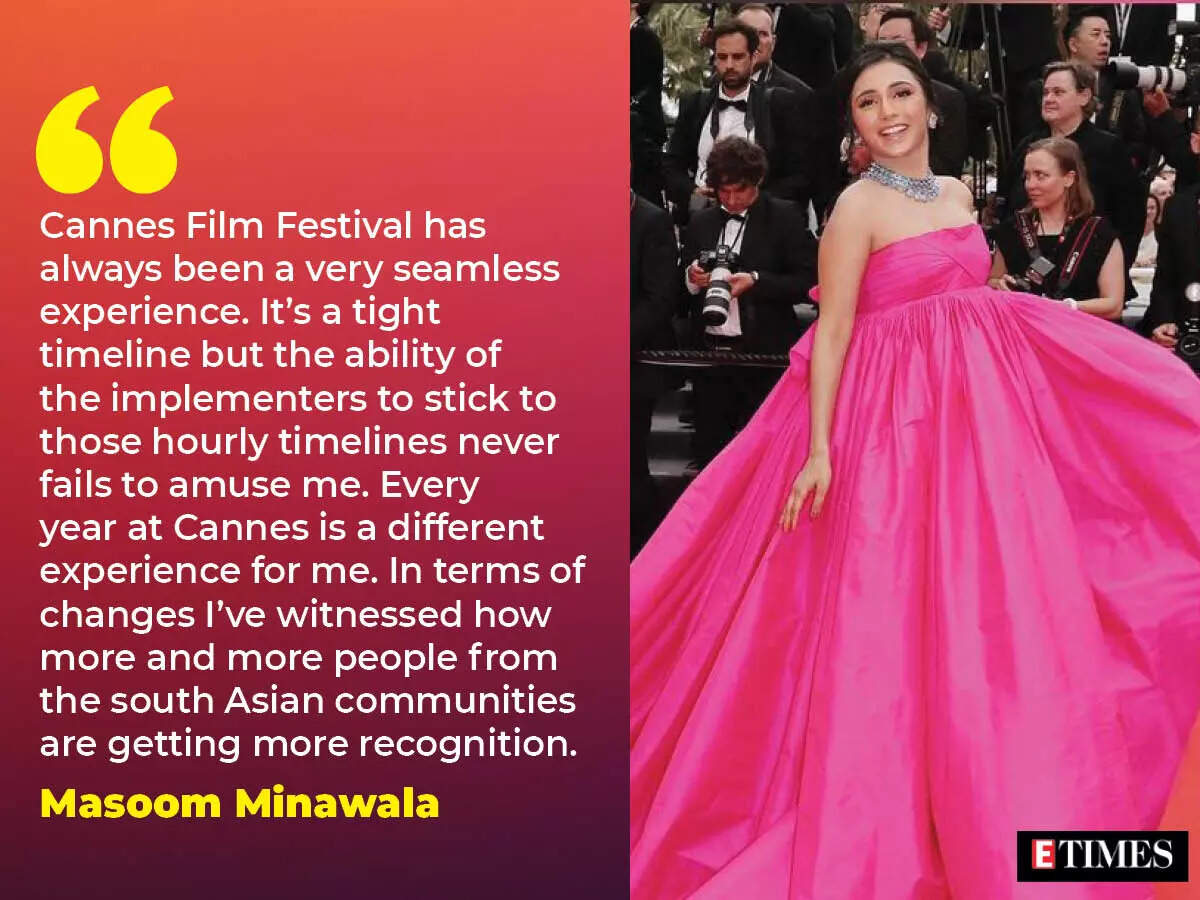
Whereas Masoom Minawala quips, “Cannes Film Festival has always been a very seamless experience. It’s a tight timeline but the ability of the implementers to stick to those hourly timelines never fails to amuse me. Every year at Cannes is a different experience for me. In terms of changes I’ve witnessed how more and more people from the south Asian communities are getting more recognition. Almost since inception, the limelight of the Cannes Film Festival was always integrated with fashion. I believe that just like cinema, fashion too is a form of self-expression. Also, naturally, where there are films there’s glamour.”
For the cinephiles outside the film industry…
Apart from film professionals, the Cannes Film Festival also attempts to reach out and cater to film enthusiasts. Brigitte informs us that only accredited journalists, professionals like the filmmakers, stars, directors, sound artistes, photographers can enter the screenings. Those who take a booth at the Film Market can have some tickets. But commoners cannot attend the screenings. But at Cannes, there is a Cinéma de la Plage that holds open-air free of cost screenings on a beach that is open to everyone!
What has changed over the years
Brigitte has seen the festival undergo changes over years of coverage. “A lot has changed because of technology and various new platforms. In the past, the Cannes Film Festival had a tremendous crowd in the Film Market. Cinephiles from across the world came in large numbers to promote and buy movies. Today, one can watch movies online without having to move from their country. So there is much less attendance than it used to be in the past. Also because of Covid, there was no Cannes Film Festival in 2020. Some selected movies could be seen online. Last year, the Festival was smaller as few people had visas to come to France. So it was a peculiar Festival,” she shares.







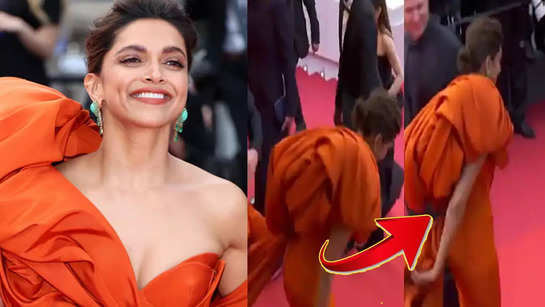
More News
Bobby Deol wins hearts as he tells the bodyguards ‘aaram se’ as the push the paparazzi, gives them a flying kiss and says ‘I love you guys’ | Hindi Movie News – Times of India
Hum Aapke Hain Koun: Box office Nostalgia: Decoding the number game of Hum Aapke Hain Koun…! | – Times of India
Aashiqui 2’s 11th anniversary: When Shraddha Kapoor said “Arohi changed everything” | – Times of India